
One day in October 2021 I made a visit to a local woodland, Farningham Woods, but was distracted before I got there by large numbers of Ring-necked Parakeets feeding on sunflower heads along the entrance road to the woods. The sunflowers were grown as a wildlife boundary crop in a strip a few metres wide but stretching for about half a mile alongside the country lane leading to the woods. Seemingly every sunflower head had its own Ring-necked Parakeet in attendance, plucking the seeds out to enjoy a feast.
When I was birding as a youngster Ring-necked Parakeets were seldom seen in the area I grew up in near Dartford, Kent. Instead if I wanted to see them I had to make a short journey into the London borough of Bexley where there were colonies that never seemed to spread. However, in the late 1990s they started to spread into our area of Kent and now they are a common sight but I have never seen them in the numbers that were buzzing around these sunflowers, swooping in from nearby trees in squadrons of 20-30 birds with a flock of about 500+ birds in total.
I enjoy seeing these brightly-coloured and cheerful birds but many people don’t like their raucous call and claim that they are an invasive species that displaces native wildlife. I have never seen them in large enough numbers (other than at roost) to suggest they could be detrimental as an invasive crop pest until this flock in the video above. While these sunflowers were grown with the specific purpose of supplying wildlife with food, it does show that if farmers were growing sunflowers for oil there could be a problem.
Watching these parakeets in the sunshine made for an enjoyable morning and it was nice to be able to ehlp some passers-by enjoy watching them too. With the nice light and abundance of birds I was able to take some nice flight shots of these very fast-flying birds.
I made a couple of visits to see this sunflower feast but after about one week the parakeets had stripped the sunflower heads mostly bare and had moved on. I suspect that they dispersed over the wider area instead of being concentrated in one spot. While the parakeets were feeding, and afterwards, other species also fed on the sunflower seeds, particularly on fallen seeds on the ground. Chaffinches were particularly numerous, feeding on spilt seeds, while Goldfinches, Blue Tits and Great Tits helped themselves to seeds still on the flower heads.
Ring-necked Parakeets nest in holes in large, often moribund, trees and spend a lot of their time perched on prominent branches, often high up meaning that views are frequently restricted to looking up at them. These birds feeding on sunflower heads gave me a chance to see them at eye-level and see them performing acrobatics at close range.
Some people would like there to be a cull of Ring-necked Parakeets saying that they displace native species of birds. It is often claimed that Ring-necked Parakeets displace woodpeckers but considering that the parakeets select nest holes early in the year and woodpeckers make their own holes later in the year, this type of displacement must be rare if it happens at all. It is possible that they displace rural Starlings, Stock Doves and Little Owls. However, Little Owls are an introduced species themselves, so that argument is rather redundant and the Stock Dove population has grown as the Ring-necked Parakeets have in my local area. However, certainly in our area rural Starlings have become much more scarce than in the past, where they are still quite common around houses, so perhaps parakeets have played a role in that. Certainly in their native range they can be a major crop pest and this observation of masses of parakeets feeding on sunflowers shows that this is a possible potential problem.


 December 14th, 2021
December 14th, 2021  Nick
Nick 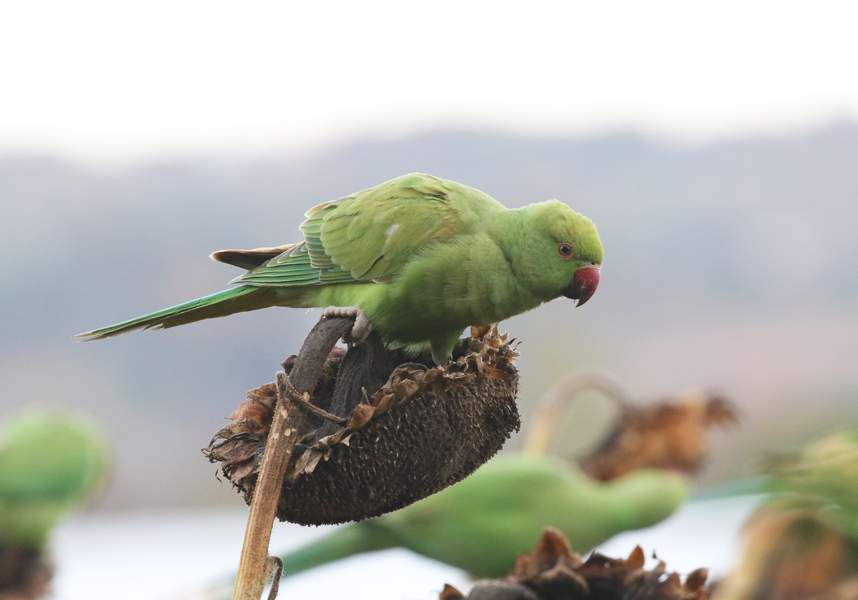
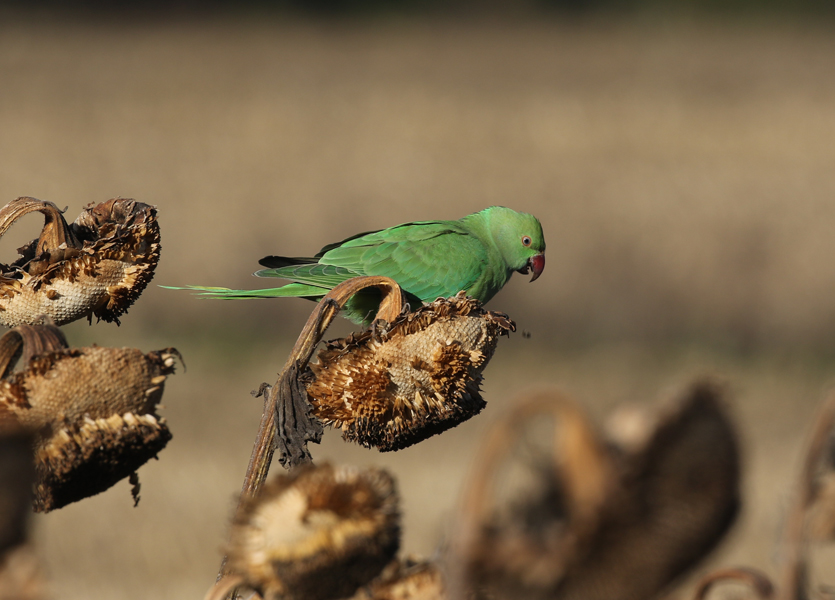
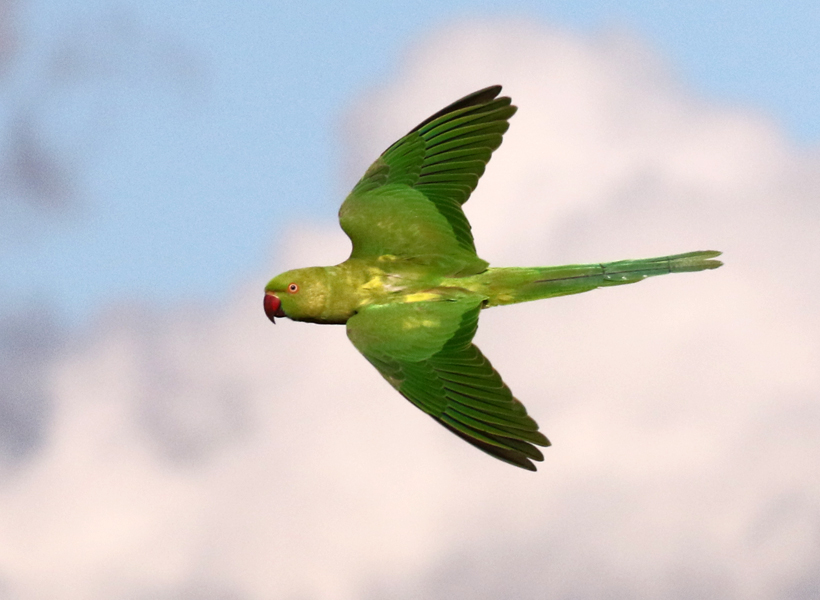
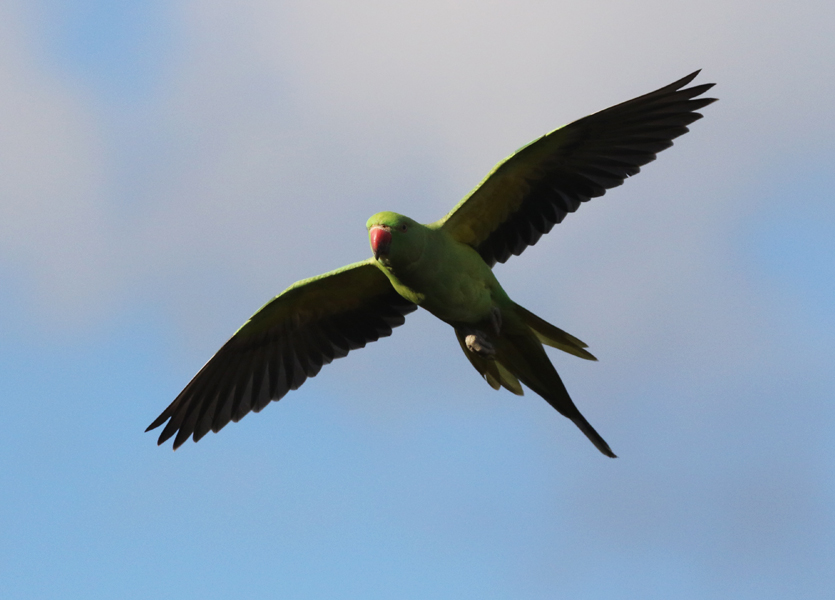


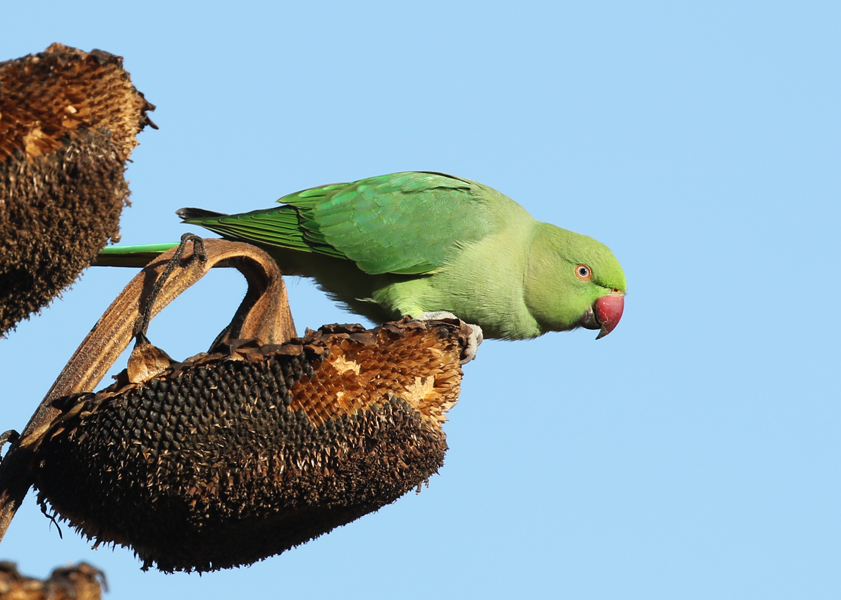
 Posted in
Posted in  Tags:
Tags: 










